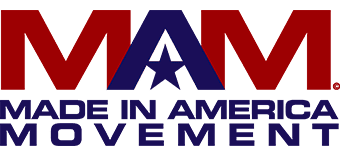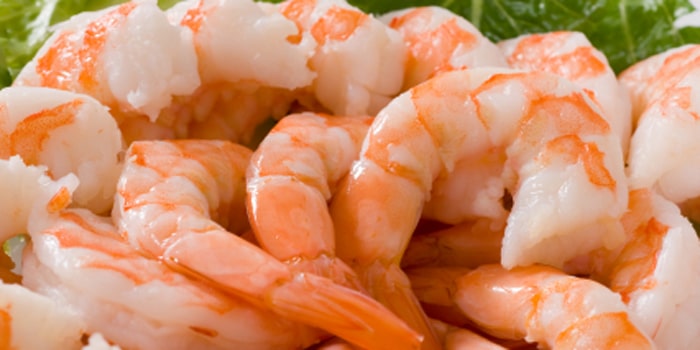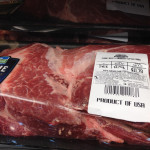Why Walmart and Costco Shrimp Prices Are So Low
Some of the most popular American corporations are importing shrimp at super-cheap prices from Thailand, where migrant workers are in slavery, like in Nazi Germany, being tortured while they work for no pay 20 hours a day. How much shrimp is being imported that’s processed by slaves, including child slaves? Walmart and Costco are contributing to the chaos, buying and selling shrimp exported from Thailand every year, and it’s slave-labor shrimp at “rock bottom” cost. No wonder Walmart and Costco are such “successful” businesses. What else are they buying that’s made by slaves who are tortured mentally and physically while working 20-hour days for zero pay? Wine, maybe?
Expensive television advertising costs and slave labor[p][/p]
No wonder these massive corporations can afford to advertise regularly on TV. Now you see. Now you see what corporations are really doing to America, supporting this, and adding to the “behind-closed-doors” slavery, much like Nazi Germany 75 years ago.
Now we all see where real advertising revenue is generated — by selling super-cheap shrimp, and we’re talking about FARM-RAISED shrimp that are fed toxic non-edible seafood and processed by tortured slaves. No wonder these huge American corporations can afford to advertise, during prime time, or during the Superbowl, and have billboards near every major highway exit, and full-page/full-color ads on the back page of newspapers.
Natural News‘ J.D. Heyes reported:
A 2013 report by the Environmental Justice Foundation (EJF) titled “The Hidden Cost: Human Rights Abuses in Thailand’s Shrimp Industry” notes that the country is the largest exporter of shrimp in the world, exporting over 392,000 tons in 2011; 46 percent of that shrimp went to the U.S., while Thailand accounted for more than 10 percent of Europe’s total shrimp imports.
“The shrimp industry is heavily reliant on migrant workers, many of whom are trafficked and face arduous journeys before having to endure abusive conditions in Thailand’s exploitative shrimp factories,” the report said. “Due to a desire to keep costs as low as possible, major exporting companies often subcontract to external pre-processing facilities. These facilities, also referred to as ‘peeling sheds’, remove the heads, veins and hard shell of shrimp and prepare it for secondary or value-added processing. This pre-processing stage of production is the most labor-intensive and least regulated aspect of an otherwise sophisticated supply chain. This informal nature makes it particularly prone to poor working conditions, breaches of national and international labor standards, child and forced labor, exploitation and abuse.”
Pricing shrimp on the “open market”[p][/p]
Walmart shrimp is imported from Thailand:
Get your slavery shrimp right here, extra large (farm raised) raw, peeled and de-veined! (http://www.walmart.com)
Here’s a review right from Walmart’s website — dated 05/19/2014: “Purchased 5 packages of this shrimp and so far have used 3. The first 2 had exactly 22 shrimp in the packages. Not quite the 26 minimum I was expecting. The third package had just 20. Now I’ve got a problem. I’m getting nearly 30% less than I expected from the package. Very dissatisfied.” (http://www.walmart.com)
So then, Wally World (Walmart) can’t even sell “slavery shrimp” without shorting the customer some pieces?
Costco shrimp is imported from Thailand:
SeaMazz “prime” shrimp are farm-raised and a product of Thailand:
Mazzetta.com.
Are you price shopping or “value” shopping?
(http://www2.costco.com)
Look! Two pounds of tail-off shrimp under 16 bucks! Wow. How do they continue to price so low? You can’t get half of that in a restaurant. Do you have a membership to the slave-labor support group? Maybe you should NEVER get one or cancel yours now.
Here’s a customer review from Costco’s website: “I eagerly tried it. It’s made of shrimp, but it doesn’t really taste like shrimp, because so much of the normal taste that one enjoys of shrimp is the texture that one gets from individual shrimps. I tried varied things, and then tossed the rest of the box (more than 80 percent).” (http://reviews.costco.com)
“Tossed the rest of the box”? She threw out 80% of Costco’s shrimp, but why? — Because the “normal taste” and “texture” is not there! Sounds like a major problem for Thailand and their “pre-processing” concentration camps.
Non-slave-labor shrimp[p][/p]
Your shrimp options are here! Shrimp just happens to be the number one seafood eaten in America, from shrimp cocktail and shrimp dip to shrimp scampi. You’ll find it in a majority of sushi rolls and as sashimi. But devastating ocean life and degrading mangrove habitats can get quite nasty. Mix that with some toxic industry pollution, slave labor and Fukushima cesium-137 radiation and how will you feel after you consume it, whether knowingly or not? You should beavoiding all farm-raised shrimp and boycotting all imported wild shrimp from your grocery list and your restaurant choices. Think about biodiversity and humanity every time you consider seafood from now on. It’s worth the time, money and consideration! Also, for organic, sustainable foods, here’s a great resource: OrganicAuthority.com.





Some senators are trying to repeal the C.O.O.L. act which would allow these corporations to drop their labeling which informs the consumer where the shrimp is produced, the COOL act should never be repealed.
Frankly, I think that most seafood is too dirty to eat. With the oil spills in the Gulf and our own Chesapeake Bay in Maryland that is constantly getting deluged with farm run-off (poultry farms in particular) the seafood is no longer abundant OR clean. I'll pass. I can live without it. It's a shame because I'm a Maryland girl and we do love our crabs. Not worth getting cancer over. I don't trust any foods processed anywhere other than the USA.
Just looked at a bag of shrimp I bought as Wegmen's brand shrimp… from Thialand.
Yes, even Wegmans issellign fish from Thailand. It's either Thailand or gulf shrimp with the oil residue.Ngt a choice I want to make.
We need accurate labeling on every single thing that is imported for the safety of Americans.
Slave shrimp or contaminated shrimp from India. 1/3 of shrimp sold in US comes from India and half of that is contaminated. Tell me where to by US farmed shrimp and I’ll get it there. Don’t blame Walmart or Costco. They get it from whomever will supply it. Right now, that is India.
I have lived in Thailand for more then 20 years and they don’t have slave labor . While most of the workers are from Burma they are paid and housed . There living standard aren’t up to western living standards but much of Thailand is like that .In all of South east Asia Thailand has the most Stringent labor laws of any country in our region
USA Natural shrimp farms non toxic saltwater shrimp,the best ship to you.